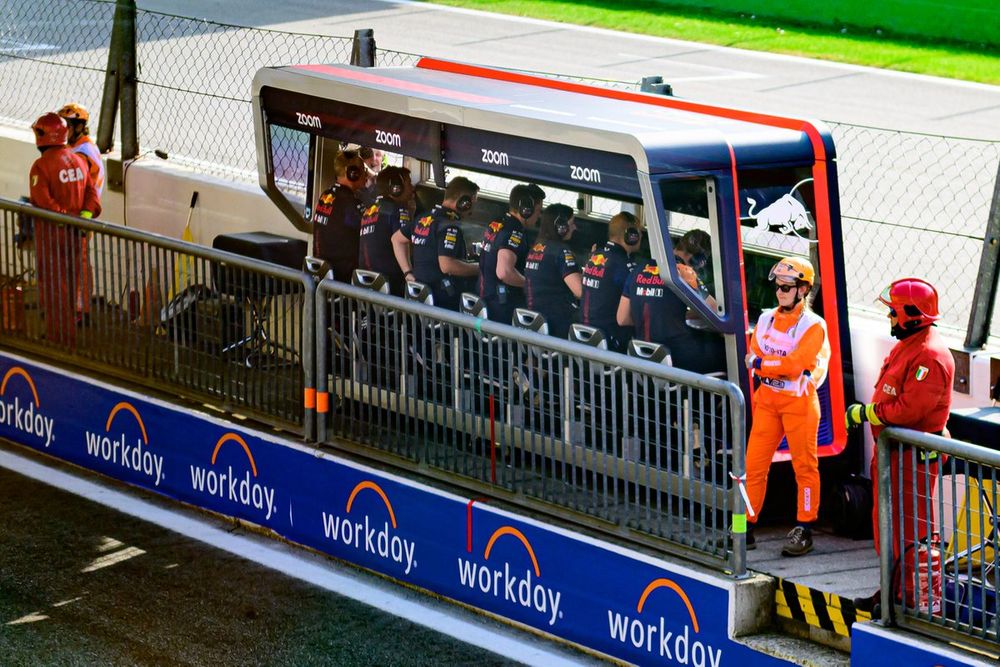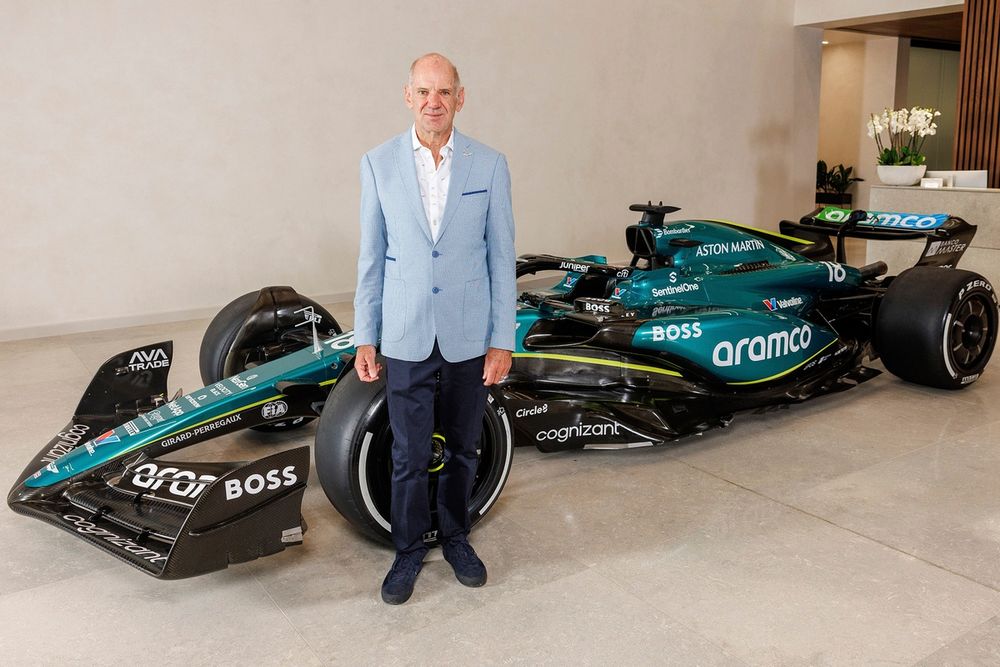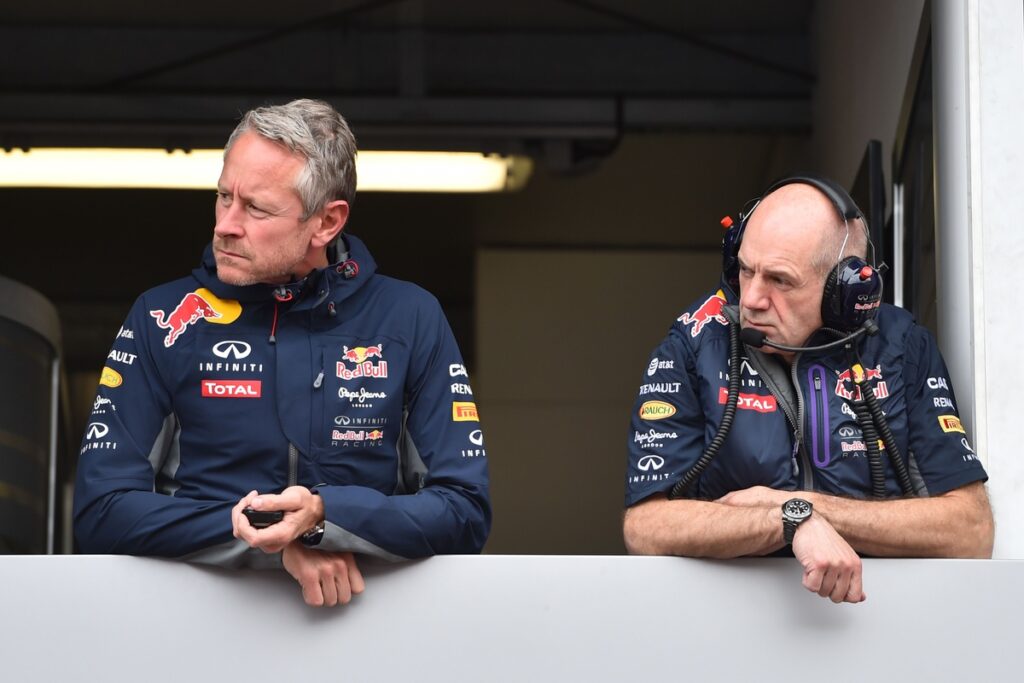Red Bull has revealed how Formula 1’s financial realities played their part in it losing key staff members like Jonathan Wheatley and Will Courtenay this year.
The Milton Keynes-based squad is undergoing a period of organisational restructuring, with a number of its senior figures having accepted jobs elsewhere and set to move on.
Its chief technical officer Adrian Newey is departing for Aston Martin, sporting director Wheatley is becoming team boss at Sauber/Audi while head of strategy Courtenay is also taking a step up to join McLaren as sporting director.
The three high-profile departures have grabbed headlines off the back of a season where the squad has faced challenges both on and off track.
But while some have pointed to these key departures as being a sign of a team in trouble, moves like this are nothing out of the ordinary as it is commonplace for rivals to offer big money deals to poach experienced staff.
However Red Bull says the ability to make counter-offers has long gone because, in a cost-cap era, spending is so limited.
F1’s cost cap rules take into account the wages of all relevant operational personnel at a team, excluding the top three earners. While the identify of these three individuals at each squad is not made public, it is thought that neither Wheatley nor Courtenay formed part of the top three at Red Bull.
Speaking about the challenges of keeping hold of top personnel in current F1, Red Bull team boss Christian Horner said: “You can’t have a Galactus because you can’t afford it. You’ve got to look at bang for buck and it forces you to make some really tough decisions.
Jonathan Wheatley, Team Manager, Red Bull Racing
Photo by: Mark Sutton / Motorsport Images
“It’s tough. Jonathan was a very good sporting director, but he was an expensive asset. So you have to weigh things up.
“When he got the opportunity to move to Audi, it was: ‘Do you know what? I think you should go for that because of the way that regulations are. We’re limited in scope and what we can do for you here.
“’So, if you have an opportunity to further yourself and go and earn significantly more money, go for it.’”
Horner says that he fully understands the motivations for senior staff members wanting to move on – especially if circumstances allowed them to take a position that was not available at Red Bull, plus a boost to their wages.
Their departures are not all negative, though, because they allow others within the current organisation to move up to more senior roles – giving them career progression that stops them feeling trapped and feeling that they need to look elsewhere.
“Jonathan has been here a long time, and he had an opportunity to become a team principal,” added Horner. “He didn’t have that here, and his role was becoming ever more one-dimensional. He was always at a racetrack.
“He’s moved on and it’s allowed others to naturally step up. You’ve got to have that evolution.
“It is the same with Will Courtenay and strategy. He has been here for 20 years.

Red Bull pitwall
Photo by: Erik Junius
“We talked about other roles within the group. He was offered a bigger role on a very high salary from McLaren, and at that point you have got to say: ‘Good luck. Go for it.’
“But at the same time, it gives an opportunity for Hannah Schmitz to move up, which, if she hadn’t have had that opportunity, she’d have been a prime target for somebody.
“In any organisation you’re going to have evolution. We had less than 5% turnover here, so we have tremendous loyalty within the team.”
While the spotlight that comes on senior staff movements is inevitably greater than it is for lesser known personnel, Horner says that natural turnover in F1 means organisations are constantly evolving and changing.
“When I came here in 2005 we assembled a fantastic team,” he said. “If I look around the engineering office, particularly trackside compared to when we were winning with Sebastian Vettel and Mark Weber, during that 2010 to 2013 period, I think there’s only three people in the engineering office that were there at that point, out of probably the 25 that are trackside.
“There is Paul Monaghan, who’s still with us. Michael Manning, who is still with us and does all the starts, and it’s probably only Jonathan and Will that were also there.
“Hannah was a graduate from Cambridge University at the time, but the rest of the team: the race engineers, control engineers, everything evolves, and you have to have that within any organisation.”
Newey didn’t want to leave F1
The highest profile departure Red Bull has experienced though is Newey, who has signed a big money deal for Aston Martin. He will start work for the Silverstone-based squad next March.

Adrian Newey, Aston Martin Formula One Team
Photo by: Aston Martin Racing
And while the design genius has made a huge contribution to Red Bull’s success over the years, Horner thinks their partnership was coming to a natural conclusion anyway.
Asked if the early season turmoil at Red Bull triggered the change, Horner said: “I think you’ve got a perfect storm that’s very easy to say, well, this caused that, and that caused this. But the reality is that all the things are totally unrelated.
“Adrian leaving the team was something that already, at the back end of 2023, he was growing somewhat, I think, conflicted in his own mind.
“The agreement that we had was at the end of ‘25 he was going to step back from F1 and really just be a mentor. Otherwise, I was going to lose the other [technical] guys to some rival teams.
“But I think he felt that his time in F1 wasn’t done, and so he made decisions for his own reasons which are understandable.
“The deal he’s got from Aston with equity and so on, is something that quite simply wasn’t on the table here. I can understand, Adrian wants another run around the block in F1, and as a shareholder and partner in a team, I certainly don’t blame him for that.
“But we live in a cost cap world now, where F1 is very different to what it was even five years ago, where 90% of our time is spent focused on: what can you afford to do within the cap?
“With the $140 million that you’ve got to spend, every penny has got to be spent very wisely. And of course, over the years, the bigger teams, sometimes they carry a bit of fat in them. What the cost cap has driven is efficiency.”
Read the full article here

